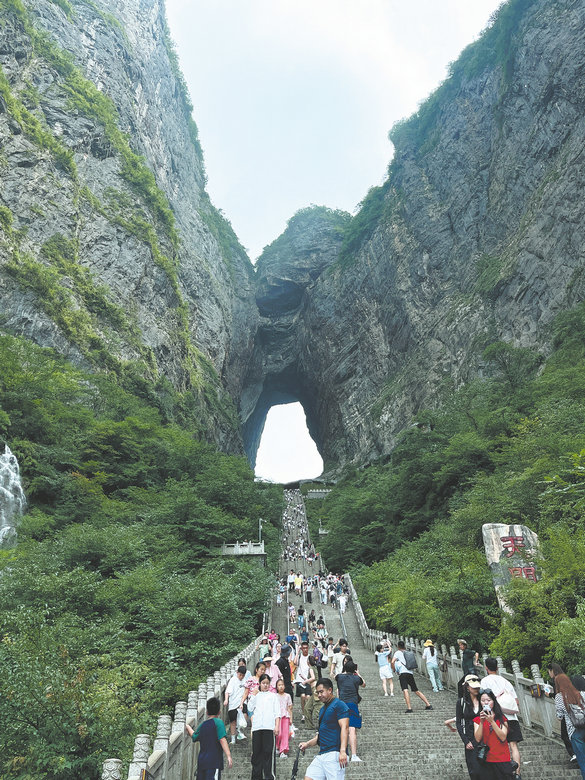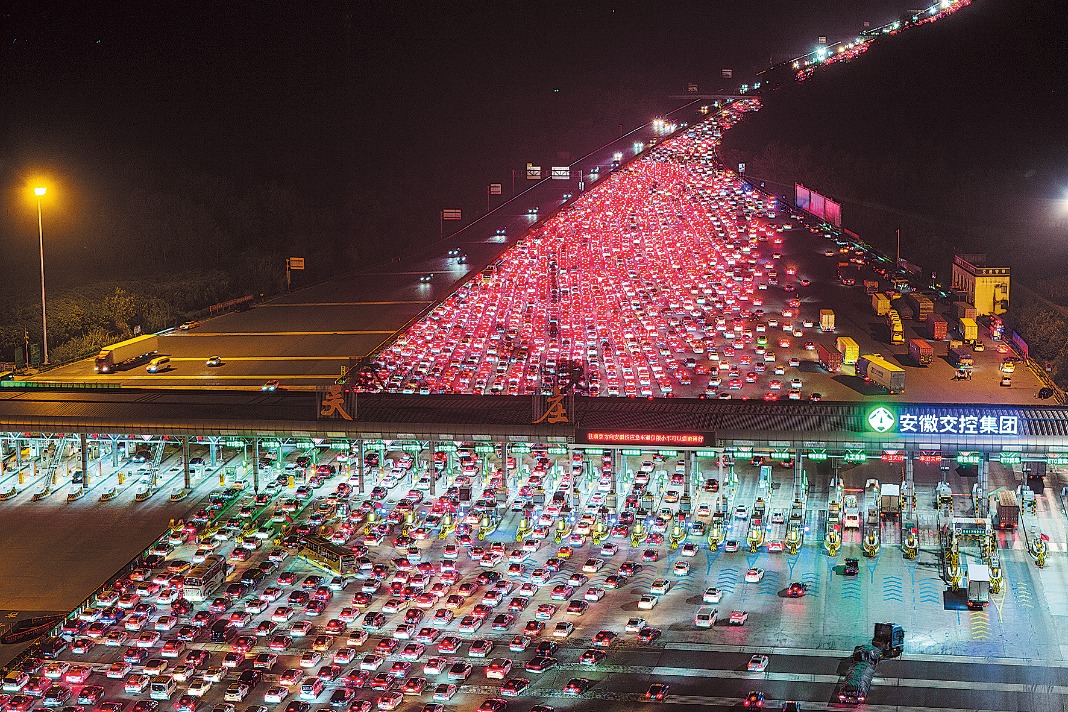Tracking a mountain of history


In the hearts of the people of Xiangxi, Tianmen Mountain is a sacred place.
Zhangjiajie, originally known as Dayong, was once governed by the Wu Kingdom (222-280). During that time, Tianmen Mountain, then called Songliang Mountain, was already a site of interest.
In 263, a dramatic event occurred: A 1,300-meter-high cliff suddenly collapsed, unveiling what appeared to be a colossal gateway to heaven. Hence, the mountain aptly being renamed Tianmen, or "Heaven's Gate".
Our driver, 39-year-old Xu Chuang, says that Tianmen Mountain is in a constant, subtle state of change, gradually shifting its orientation to the west.
About 70 years ago, the giant cave was visible from South Wharf, which was then the most bustling area of Zhangjiajie. Today, however, to see it, one must travel to Dayong Bridge, four kilometers away from the wharf, which has since become the city's vibrant hub. "Wherever it points, prosperity follows," he says.
Now standing at 131.5 meters high, 57 meters wide, and 60 meters deep, Tianmen Cave is the highest natural karst cave worldwide. To reach it, visitors must climb 999 steep steps, unless they take the escalators that run through the mountain.
























